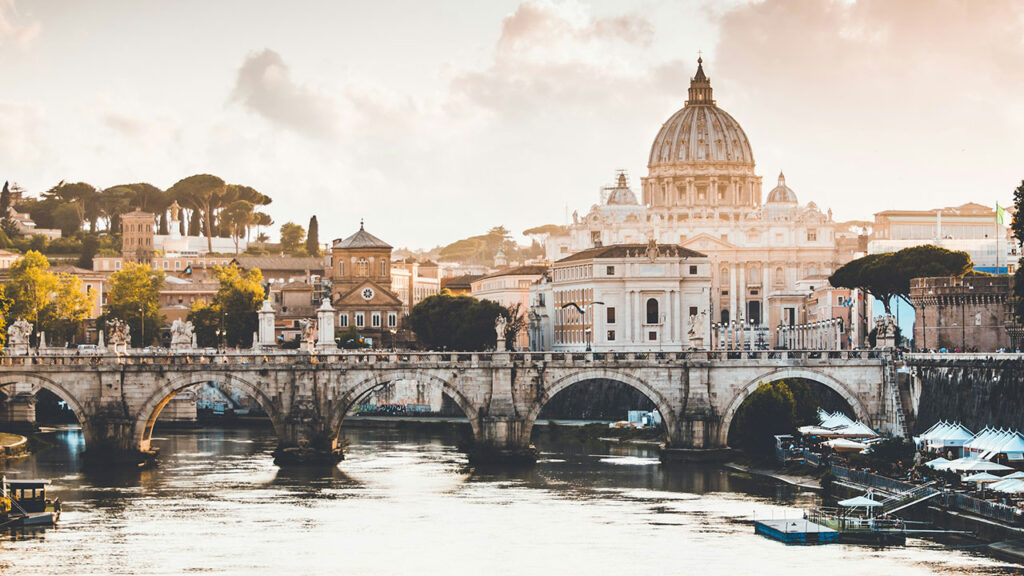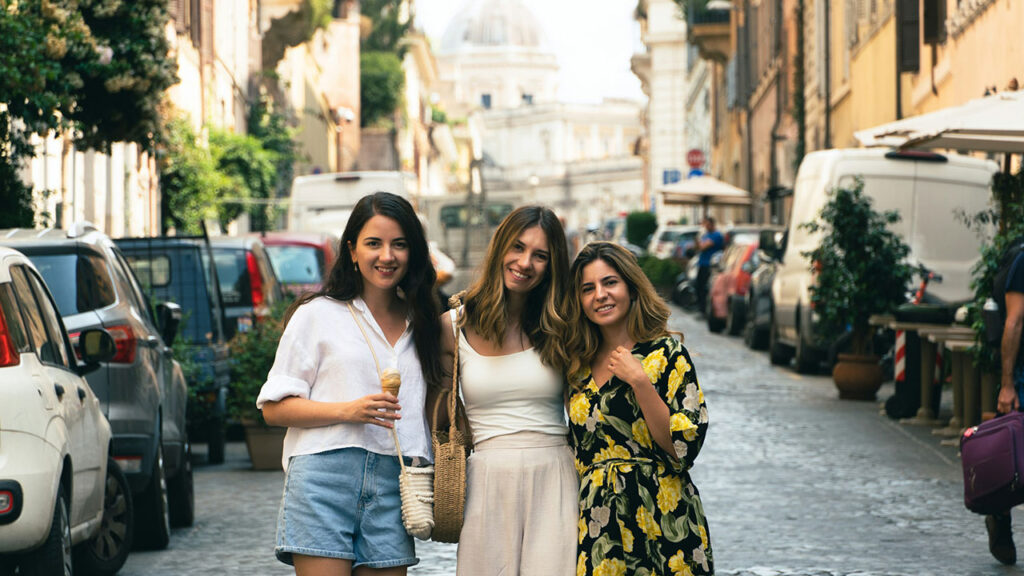Rome, with its rich tapestry of history, culture, and art, continues to captivate visitors from around the globe. As we step into 2024, the Eternal City remains a must-visit destination for anyone seeking to experience its timeless allure. Here’s an in-depth guide to the top 10 famous places in Rome that you should include in your itinerary for an unforgettable journey.
1. The Colosseum

Overview: The Colosseum, also known as the Flavian Amphitheatre, is an iconic symbol of ancient Rome. Completed in AD 80, it was the largest amphitheater in the Roman Empire and could hold up to 80,000 spectators. This architectural marvel hosted gladiatorial contests, animal hunts, and public spectacles, including mock sea battles.
Highlights:
- Guided Tours: Enhance your visit with a guided tour that delves into the history and engineering behind the Colosseum.
- Underground Chambers: Explore the hypogeum, the underground area where gladiators and animals were kept before battles.
- Night Visits: Consider booking a night tour to experience the Colosseum under the evening lights.
Tips:
- Purchase tickets in advance to avoid long lines.
- Wear comfortable shoes as you’ll be walking on uneven surfaces.
2. The Roman Forum
Overview: The Roman Forum was the heart of ancient Rome, serving as the center of public life. It was a bustling marketplace and the site of key events in Roman history. Walking through the Forum, you can see the remains of important buildings such as the Temple of Saturn and the Arch of Titus.
Highlights:
- Historic Structures: Visit the Temple of Vesta and the House of the Vestal Virgins for a glimpse into Roman religious practices.
- Capitoline Hill: Climb to Capitoline Hill for panoramic views of the Forum and a deeper understanding of its historical significance.
Tips:
- Combine your visit with the Colosseum and Palatine Hill for a comprehensive exploration of ancient Rome.
3. The Pantheon
Overview: The Pantheon, originally built as a temple to all the gods of pagan Rome, is now a church and one of the best-preserved monuments of ancient Rome. Its dome, with an oculus at the center, remains the largest unreinforced concrete dome in the world.
Highlights:
- Architectural Marvel: Marvel at the engineering feat of the Pantheon’s dome and the interplay of light through the oculus.
- Tomb of Raphael: The Pantheon also serves as the final resting place of the famous artist Raphael.
Tips:
- Visit early in the morning or later in the afternoon to avoid the crowds.
- Respect the dress code as it is an active church.
4. St. Peter’s Basilica
Overview: Located in Vatican City, St. Peter’s Basilica is a masterpiece of Renaissance architecture designed by Michelangelo. It stands on the site where St. Peter, one of Jesus’ apostles, is believed to be buried. The basilica is renowned for its grandeur and artistic treasures.
Highlights:
- Dome Climb: Climb to the top of the dome for breathtaking views of Rome and St. Peter’s Square.
- Pietà by Michelangelo: Don’t miss Michelangelo’s Pietà, a stunning sculpture depicting the Virgin Mary holding the body of Christ.
Tips:
- Dress modestly, covering shoulders and knees, as a sign of respect.
- Book a skip-the-line ticket or join a tour to avoid long waits.
5. The Vatican Museums
Overview: The Vatican Museums house one of the most extensive art collections in the world, collected by the Catholic Church over centuries. Highlights include works by Michelangelo, Raphael, and Leonardo da Vinci. The museums culminate in the Sistine Chapel, famous for Michelangelo’s frescoed ceiling.
Highlights:
- Sistine Chapel: Take your time to appreciate the intricate details of the ceiling and the Last Judgment fresco.
- Raphael Rooms: Admire Raphael’s frescoes that include The School of Athens.
Tips:
- Reserve tickets in advance and consider a guided tour for a richer experience.
- Allocate several hours for your visit as the collection is vast.
6. Trevi Fountain
Overview: The Trevi Fountain, designed by Nicola Salvi and completed in 1762, is one of Rome’s most famous landmarks. The baroque masterpiece is known for its dramatic sculptures and the tradition of tossing a coin to ensure a return to Rome.
Highlights:
- Baroque Sculpture: Admire the central figure of Oceanus surrounded by sea creatures and allegorical figures.
- Coin Tossing Tradition: Participate in the tradition by tossing a coin over your left shoulder into the fountain.
Tips:
- Visit early in the morning or late in the evening to avoid peak tourist crowds.
- Be cautious of pickpockets in the area.
7. Spanish Steps
Overview: The Spanish Steps, designed by Francesco de Sanctis and completed in 1725, connect the Piazza di Spagna with the Trinità dei Monti church. The steps are a popular meeting place and offer a charming view of the city.
Highlights:
- Viewpoint: Climb the steps to enjoy views of the Piazza di Spagna and the surrounding area.
- Piazza di Spagna: Explore the nearby Piazza di Spagna, home to luxury boutiques and cafes.
Tips:
- Enjoy a gelato from a nearby shop and take in the lively atmosphere.
- The steps can get crowded, so visit during less busy times.
8. Piazza Navona
Overview: Piazza Navona is a vibrant square with a rich history dating back to the 1st century AD. It was originally a stadium for athletic contests and later transformed into a lively public space. The square is famous for its fountains and lively street performances.
Highlights:
- Fountain of the Four Rivers: Designed by Bernini, this fountain features allegorical figures representing four major rivers.
- Baroque Architecture: Admire the Church of Sant’Agnese in Agone and the surrounding baroque buildings.
Tips:
- Visit in the evening to enjoy the square’s lively atmosphere and street performers.
- Explore the surrounding narrow streets for charming shops and cafes.
9. Basilica di San Clemente
Overview: The Basilica di San Clemente is a fascinating multi-layered site showcasing Rome’s history from the 1st century AD to the present. The basilica features three levels: a 12th-century church, a 4th-century church, and a 1st-century pagan temple.
Highlights:
- Underground Exploration: Discover the 1st-century Mithraic temple and the 4th-century basilica beneath the current church.
- Mosaic Art: Admire the vibrant mosaics in the 12th-century church.
Tips:
- Allocate time to explore the different levels and their historical contexts.
- Respect the religious nature of the site and dress appropriately.
10. Villa Borghese
Overview: Villa Borghese is Rome’s central park, offering a lush green retreat from the city’s hustle. It’s home to several museums, including the Galleria Borghese, and provides a perfect setting for leisurely walks and picnics.
Highlights:
- Galleria Borghese: Explore the gallery’s impressive collection of Renaissance and Baroque art, including works by Caravaggio and Titian.
- Borghese Gardens: Stroll through the beautifully landscaped gardens and enjoy the serene environment.
Tips:
- Rent a bike or a boat to explore the park more efficiently.
- Check the opening hours of the Galleria Borghese and book tickets in advance as they often sell out.
Conclusion
Rome is a city that seamlessly blends the ancient with the modern, offering a rich array of experiences for visitors. From the grandeur of the Colosseum to the serene beauty of Villa Borghese, these top 10 famous places are essential stops on any Roman adventure. As you explore these landmarks, you’ll uncover the layers of history that have shaped the Eternal City, making your visit a truly memorable one.


